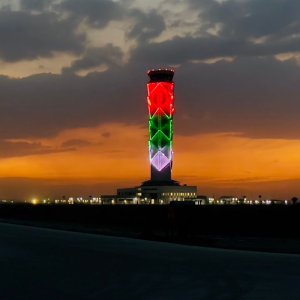
Clear Skies Ahead for Top Manufacturers
The world’s top airlines are facing a lag in orders. In the first nine months of the year, Airbus sold 319 aircraft, while Boeing received orders for 565 aircraft. This continues a trend that saw orders fell by 38 percent in 2015 only to drop again in 2016 to a total of 1,579, a 24 percent decline. But an impressive backlog is keeping manufacturers busy and expectations going forward are positive, which could help bolster Mexico’s burgeoning aerospace industry.
Airbus and Boeing are working through a backlog of 6,691 and 5,659 units, respectively. Furthermore, aircraft demand is expected to keep up. Overall, during 2016 the aerospace sector grew 3 percent in revenue and 7 percent in profits, according to PwC. In its annual report, Boeing states that 41,030 new aircraft will be introduced to the market by 2036, with a market value of US$6.1 trillion.
With its blooming aerospace industry, Mexico is in an excellent position to enter the aerospace global value chain. “For the next five years, a global supply shortage of US$50 billion is expected,” says Eugenio Marín, CEO of TechBA Madrid-Montreal & TechBA Aerospace. “Mexico is in good position to absorb 10 to 15 percent of that shortage in the next 10 years.” The country has already gained recognition for its impressive growth in the aerospace industry, ranked the 14th-largest aerospace manufacturer in the world. “In 2016, exports reached US$7.18 billion, which helped us climb from 10th place to become the sixth-biggest exporter of aerospace parts to the US, the largest aerospace market in the world. This was achieved in 10 years and our goal is to enter the top three by 2020,” says Carlos Robles, President of FEMIA and General Manager of Bombardier Queretaro.
AIRBUS BREAKING RECORDS
For the 14th year in a row Airbus broke its own deliveries record in 2016, reporting 688 deliveries to 82 clients. Of its deliveries, 545 were from the single-aisle A320 family. Furthermore, the company reported a 3 percent increase in revenue from €64.5 billion (US$75.7 billion) to €66.6 billion (US$78.1 billion). The year also brought another milestone as Airbus delivered its 10,000th aircraft, an A350 XWB.
The OEM began 2017 by hiking its average list prices by 1 percent to adapt to changes in materials costs, stating price increases reflect the value of the aircraft. The OEM may face a challenging year due to the poor sales performance of the colossal A380 and smaller overall orders. Airbus’ 731 orders for 2016, represent a 29.4 percent reduction from 2015’s 1,036 orders and by September 2017 the company had received only 319 new orders and delivered 454 units. Airbus says it expects to close the year with 700 units sold.
Nonetheless, the OEM sees a good market in Mexico. “Mexico is our second-most important market in Latin America after Brazil and we have had a leading presence here for almost 30 years. This can be seen in the approximately 120 aircraft managed by our four clients in Mexico, which are AeroUnion, Interjet, Volaris and Viva Aerobus,” says Rafael Alonso, President of Airbus Latin America and Caribbean. By the end of 2016, Airbus aircraft represented 40.3 percent of Mexico’s commercial fleet.
BOEING ON TOP
Boeing is the largest aerospace company in the world, according to PwC. It reported US$94.6 billion in revenue during 2016. While an impressive figure by any means, it stills represents a 2 percent decrease over 2015. More than two-thirds of its revenue, US$65.1 billion, was generated by the OEM’s commercial division, which toped commercial deliveries with 748 aircraft. In 2016, Boeing’s aircraft deliveries fell 1.9 percent from 762 commercial aircraft, while orders also declined, from 768 in 2015 to 668 the following year.
During the fourth quarter of 2016, Boeing delivered its 500th 787 Dreamliner to Avianca. The OEM forecasts smaller revenue for 2017, ranging between US$90.5 billion and US$92.5 billion. It also expects to deliver between 760 and 765 commercial aircraft. During the first nine months of 2017, the company received orders for 565 aircraft and delivered 554 units.
Boeing expects Mexico and the Latin American region to play a strong role in its future. “We anticipate that Latin America will need 2,960 new aircraft by 2035. Mexico is the second-largest market in the region, so we expect many of these aircraft to come to the country. Of those, 70 percent will be part of fleet expansions, not replacing existing airplanes. Airlines will continue expanding their fleets to potentially double in size by 2035,” says Donna Hrinak, Vice President of Boeing and President of Boeing Latin America. Boeing aircraft represented 24.4 percent of Mexico’s fleet at the end of 2016.
UPS, DOWNS AT BOMBARDIER
Extremely strong in its executive jet division with the Challenger, Global and LearJet, Bombardier appears to have started on the wrong foot with its venture into commercial aircraft. In 2004, the OEM launched a project for its first commercial airplane, dropped it two years later and relaunched it in 2008. The project ran behind schedule and incurred cost overruns calculated at US$2 billion. This caused the OEM to close 2015 with a loss of US$5.3 billion and a US$10 billion reduction in orders, leading the Canadian province of Quebec, the company’s home base, to provide a US$1 billion safety net.
The OEM subsequently launched the C Series, a family of narrow-body jets with a capacity for 110 to 135 passengers, which is its first completely new aircraft program in over 30 years. Orders have been sluggish for the C Series, comprised of the CS100 and CS300, with 123 orders for the first and 237 for the second. Bombardier’s aerospace division reported an 11 percent loss during 2016 in comparison to the previous year, while the company slashed its overall operating loss to US298 million in 2016, a 94 percent improvement over 2015’s US5.18 billion loss. However, the sky is not yet clear for the OEM. In October 2017, after a complaint from Boeing, the US government imposed a 300 percent trade duty on the C Series.
As the company continues its revival, Latin America is among the regions that could be a good bet. “In the business division, we have a strong growth forecast for Bombardier globally as we estimate that the global market will need 8,300 new business jets within the next 10 years. The outlook is also positive for our commercial division as we expect a need for 12,700 new aircraft by 2034. In Latin America, we forecast a need for 790 business jets and 1,150 commercial aircraft during the next 10 years,” says Robles. Bombardier aircraft represent 0.6 percent of Mexico’s commercial fleet, indicating significant room for growth.
EMBRAER FOCUSES REGIONALLY
Embraer, which began as a state company for the military sector, is now among the largest commercial aircraft OEMs in the world. It participates in the construction of commercial airplanes, executive jets and defense aircraft with three commercial aircraft: the ERJS, E-JETS and E-JETS E2. These are used mostly for shorter, regional flights by United Express, Delta Connection, US Airways Express, Virgin Australia and Lufthansa CityLine. In Mexico, the OEM counts Aerolitoral, TAR and Aeroméxico Connect as clients.
The E-JETS E2 completed its maiden flight in May 2016 and is now undergoing a certification process with the goal of entering commercial service during 2018 alongside the Norwegian Wideroe. Embraer finished 2016 with 108 commercial deliveries and has a backlog totaling US$19.6 billion. The company is a global leader of commercial aircraft with up to 130 seats.
WAITING IN THE WINGS
Another contestant for the regional jet market took its maiden flight in 2015. The Mitsubishi Regional Jet (MRJ), manufactured by Mitsubishi Aircraft Corporation, a joint venture between Mitsubishi Heavy Industries and Toyota Motor Corporation, has successfully flown three trial runs from Japan to the US and was expected to enter the market in 2018. However, a series of delays have pushed its launch date to 2020.
China is also looking for a share of the commercial aircraft pie. The Commercial Aircraft Corporation of China (Comac) is launching a passenger jet to reduce the country’s dependence on both Airbus and Boeing. The company produces the Comac ARJ21 Xiangfeng, which can seat up to 95 passengers. It made its first commercial flight in June 2016 and was approved for mass production in June 2017.
















